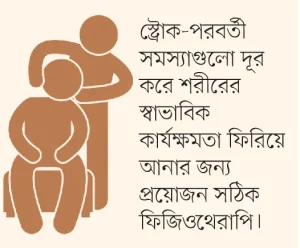Modern Treatment of Paralysis
Causes and Symptoms:
- Causes: Paralysis or stroke is caused by a disruption in blood flow within the brain’s blood vessels. If a part of the brain is suddenly damaged or blood supply is cut off, the limbs on one side of the body stop functioning, leading to paralysis.
- Symptoms: Partial paralysis may occur on one side of the body due to mild strokes. Stroke victims lose normal mobility. Every six seconds, someone dies from a stroke globally.
Stroke Symptoms:
- Different parts of the brain control different parts of the body, so stroke symptoms depend on the affected brain area.
- Paralysis may occur on one or both sides of the body.
- Muscle tone or elasticity decreases initially and then gradually increases, or muscles in the arms and legs become weak and soft.
- Pain may occur in the limbs, and movement can be fully or partially reduced.
- Muscles may atrophy or become rigid.
- Speech and eating difficulties can also arise.
Treatment:
- Stroke patients require treatment from a team that includes neurologists, general physicians, physiotherapists, occupational therapists, nurses, and vocational trainers.
- Medications can reduce the risk for stroke patients but cannot restore normal bodily functions.
- Proper physiotherapy is essential to regain normal bodily functions post-stroke.
Physiotherapy Treatments:
- Mechanical Treatments: Depending on the patient’s condition, treatments like infrared radiation (IRR), paraffin wax packs, and electrical stimulation may be used.
- Manual Treatments:
- Normalizing breathing through breathing techniques.
- Preventing bedsores through proper positioning.
- Maintaining normal muscle length through stretching, strengthening, and hold-relax techniques.
- Training patients to sit up and stand from a lying position using bed mobility techniques.
- Restoring normal muscle tone and joint mobility through passive movement.
- Improving balance and coordination, and regaining normal walking ability through gait re-education.
- Enhancing the patient’s work capacity and improving their mental state.
Assistive Devices:
- Depending on the condition, patients may need to use wheelchairs, crutches, frames, or sticks.
